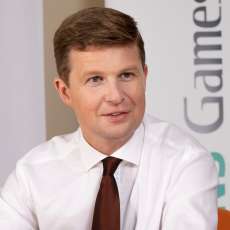Siemens Gamesa is a global pioneer in onshore and offshore wind solutions, as one of the leading turbine manufacturers that installed nearly 100 GW capacity. Siemens Gamesa in Poland represents the full spectrum of the company service offering in the country.
Siemens Gamesa has a strong presence in Poland, could you walk us through your priorities and capabilities here?
So far we have installed we installed 1 GW onshore wind capacity in Poland, which covers about 18% of the market. We currently have five wind parks under construction and expect this to increase after the 2019 2.5 GW auction.
![]()
We are leveraging our background and expertise in offshore wind to help Poland prepare for the development of its first offshore park, which we expect to be in operation by 2025.
In Poland we also introduced our multi-brand servicing in 2019, after signing two long term service contracts with Polenergia for two wind farms equipped with V90 turbines as Vs. The combined knowledge of Siemens and Gamesa and in depth knowledge of turbine technology makes us fully versatile. We are now working on also integrating Senvion into Siemens Gamesa, an exciting addition which will enrich our know how even more and broaden our servicing prowess.
Given Poland’s need to embrace RES more adamantly than other European countries in order to meet climate targets, what opportunities do you see here for Siemens Gamesa?
Wind is here to stay, this is for certain. Several years back government legislation all but halted wind development in Poland, but it has now become apparent that it is necessary to integrate in the energy matrix. Wind is also now acknowledged as a lower cost solution that will ultimately positively benefit the Polish economy. We are all waiting for the infamous 10H rule to be amended so that new onshore projects may come to fruition.
How has technology progressed in the past years, and what impact is it having on your business, as well as that of park developers?
The biggest change is in the size of wind turbines – we are getting higher, as well as bigger rotor diameters and nominal capacity. This radically changes the playing field, for example in order to build a 50 MW park capacity a mere five to ten turbines will suffice, as opposed to the 25 previously needed.
![]()
Ten years ago we sold 2 MW turbines onshore and 3 MW turbines offshore, now already we are talking about 6 MW onshore and 10+ MW turbines offshore.
In addition, capacity has evolved in such a way that with the same installed capacity we can now generate more energy, making for more profitable returns for investors, and also the ability to offer lower energy prices into the market, ultimately benefiting end customers. Technology has become a powerful instrument in turning renewable energy from a somewhat more niche, expensive alternative, to a mainstream sustainable source that can now easily compete with traditional energy sources.
In Poland nevertheless energy prices went down last year, unfortunately keeping circumstances challenging here for wind producers?
Indeed turbines prices and other investment costs may well go down, but ultimately if energy prices do not remain stable then producers struggle.
In 2019 you launched the latest generation SG 10.0 which allows for an impressive 11 MW offshore production capacity. Are you gearing up for the opening of the Polish sea?
All turbine manufacturers are engaged in a technological race at the moment, so yes we are competing for offshore wind in the Baltics, however we are moving so rapidly that we will have an even more advanced turbine ready by 2025. SG 10.0 is a direct drive turbine, we introduced this technology in 2011, starting with 6 MW machines and rotors of 120 m diameters that now reached 193 m. This model is the first that can be installed without needing any subsidies under certain additional conditions and in some areas where offshore wind is already developed.

In December 2019 we reached the milestone of installing our 1,000th offshore direct drive turbine, with another 1,000 already ordered. This shows the market’s commitment, but also the trust of our customers.
Touching upon the supply chain, does Poland have a strong ecosystem of suppliers, and what has been your experience with them?
Our sourcing strategy is based on a few pillars, as a larger company we need to cover wide geographies, with offshore demand growing recently in the United States in Asia. In Poland we have roughly 100 suppliers for the local market, many of whom are also exporting into international markets. In 2019 we purchased equipment and services in Poland amounting to approximately EUR 300 million and have many certified partners who we believe employ the highest quality standards and we intend to pursue further collaboration with.
What do you have to look forward to for Siemens Gamesa in Poland in the coming years?
We are keeping our eye on the ball with the five projects I mentioned, and are confident new projects will come about after the December 2019 auction. Likewise we are looking for new multi-brand opportunities for our service business. It will be a busy period altogether keeping in mind the integration with Senvion, which we wish to run as smoothly as possible. As far as legislation is concerned we are observing positive signs from the government for both onshore and offshore, and are leaping into 2020 with optimism.






